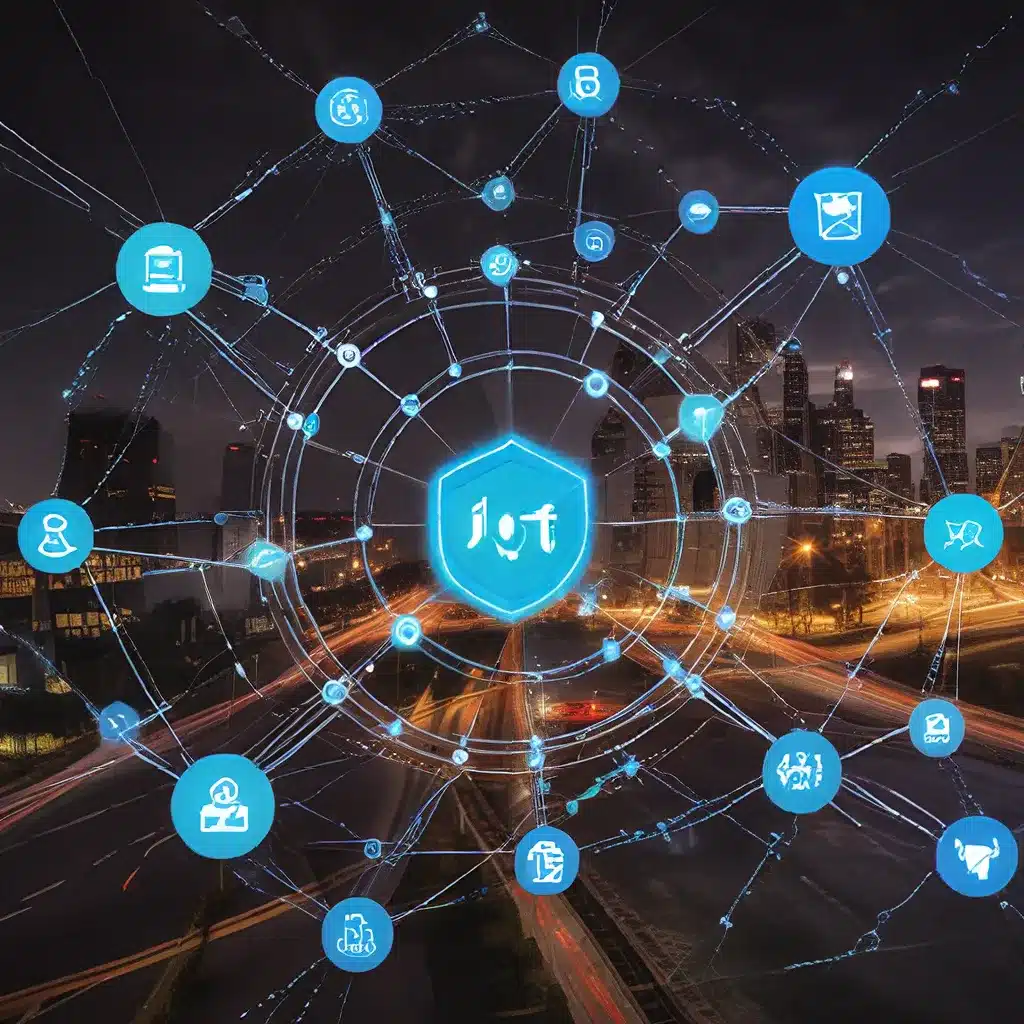
The Evolving Landscape of Sensor Networks and IoT
The rapid advancements in sensor technology and the Internet of Things (IoT) have ushered in a new era of interconnectivity, revolutionizing how we interact with the world around us. From smart homes and industrial automation to environmental monitoring and healthcare applications, sensor-powered systems have become ubiquitous in our daily lives. However, as these networks grow in complexity and scale, the need to prioritize security and trustworthiness has become increasingly paramount.
In this article, we will explore innovative approaches to securing sensor networks and IoT devices, delving into the latest advancements, best practices, and emerging challenges in this rapidly evolving field.
Addressing the Security Challenges in Sensor Networks and IoT
The proliferation of IoT devices has introduced a multitude of security risks, ranging from data breaches and unauthorized access to malware and denial-of-service (DoS) attacks. Securing these sensor-powered systems presents a unique set of challenges, as they often operate in resource-constrained environments with limited computing power, memory, and battery life.
The National Science Foundation (NSF) has recognized the urgency of addressing these security concerns, and has spearheaded the Secure and Trustworthy Cyberspace (SaTC) program. This initiative aims to develop innovative solutions that can enhance the security and resilience of sensor networks and IoT systems, while also fostering collaboration between industry, academia, and government entities.
Cryptographic Techniques for Sensor Network Security
One of the key focus areas in securing sensor networks is the implementation of robust cryptographic techniques. Traditional encryption methods, such as symmetric-key and asymmetric-key cryptography, have been adapted to address the unique constraints of sensor nodes. Lightweight cryptographic algorithms, for instance, have been designed to minimize resource consumption while maintaining a high level of data confidentiality and integrity.
Additionally, the integration of quantum-resistant cryptography has emerged as a promising approach to safeguard sensor networks against the potential threat of quantum computing. These advanced cryptographic techniques not only protect against eavesdropping and data tampering, but also ensure the long-term security of sensor-powered systems.
Recent research has also explored the use of blockchain technology to enhance the security and transparency of sensor network data, enabling tamper-evident logging and secure data sharing among trusted parties.
Secure IoT Device Design and Authentication
Securing IoT devices at the hardware and firmware level is another crucial aspect of safeguarding sensor-powered systems. Trusted Platform Modules (TPMs) and hardware-based security enclaves can provide hardware-level protection against physical attacks and side-channel vulnerabilities.
Device authentication is also essential in preventing unauthorized access and rogue device infiltration. Secure boot processes, hardware-based key storage, and certificate-based authentication mechanisms can help verify the identity of IoT devices and establish trust within the network.
Emerging approaches in this domain include the use of biometric authentication for IoT devices, leveraging unique physical attributes such as fingerprints or iris scans to ensure secure access control.
Secure Network Architectures and Protocols
The network architecture and communication protocols employed in sensor networks and IoT systems play a crucial role in their overall security posture. Secure network topologies, such as mesh networks and edge computing architectures, can minimize the attack surface and enhance resilience against single points of failure.
Likewise, the selection of secure communication protocols is essential. Lightweight variants of TLS/SSL, IPsec, and DTLS have been developed to provide end-to-end encryption and secure authentication in resource-constrained IoT environments.
Sensor-Networks.org is a leading resource for professionals and enthusiasts interested in the latest advancements in sensor network technologies and IoT applications. The platform offers a wealth of information, case studies, and industry insights to help organizations and individuals navigate the complexities of secure sensor network design and implementation.
Energy-Efficient Security Measures for Sensor Networks
One of the key challenges in securing sensor networks is the need to balance security requirements with energy consumption. Sensor nodes often operate on limited battery power, making it crucial to optimize energy usage while maintaining robust security measures.
Lightweight cryptographic algorithms, energy-efficient key management protocols, and duty-cycling techniques have emerged as effective strategies to reduce the power consumption of security-related operations. Additionally, energy harvesting and power-aware routing protocols can help extend the operational lifetime of sensor nodes, ensuring the long-term reliability and security of the entire network.
Towards a Secure and Resilient IoT Ecosystem
As the IoT landscape continues to evolve, the need for innovative security solutions has become increasingly critical. By embracing advanced cryptographic techniques, secure device design, robust network architectures, and energy-efficient security measures, researchers and industry leaders are paving the way for a more secure and resilient IoT ecosystem.
Through collaborative efforts among academia, industry, and government agencies, the sensor network and IoT community is actively addressing the security challenges that lie at the frontier of technological advancement. By prioritizing security and trustworthiness, we can unlock the full potential of sensor-powered systems and ensure a future where connectivity, efficiency, and safety are seamlessly integrated.